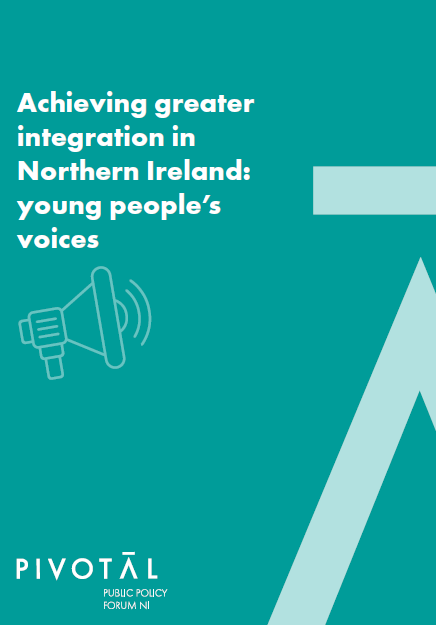
Analysis of the PIVOTAL Integration Report’s Relevance to Strangford Lough Crossing
Executive Summary
The PIVOTAL report “Achieving greater integration in Northern Ireland: young people’s voices” (dated May 15, 2025) offers significant insights relevant to the proposed Strangford Lough Crossing (SLC) project. While not directly addressing the crossing, the report’s findings on community integration, infrastructure needs, and the experiences of young people provide important context that supports the case for improved connectivity between Portaferry and Strangford.
Key Relevance Points
1. Physical Infrastructure as a Barrier to Integration
The PIVOTAL report identifies physical infrastructure as a critical factor in either enabling or preventing community integration:
“Planning and infrastructure policy is devolved in Northern Ireland. I welcome the Northern Ireland Executive’s commitment in its draft Programme for Government to invest in infrastructure. The UK Government is committed to working with the devolved legislatures, including the Northern Ireland Executive, to ensure that all parts of the UK can prosper.”
The Strangford Lough ferry represents a significant physical barrier that reinforces separation between communities, aligning with findings in the PIVOTAL report where young people identified “limited neutral public spaces” as obstacles to integration.
2. Fear and Perception of Safety in Divided Communities
The PIVOTAL report highlights that:
“Fear was the most common emotion expressed by young people in relation to their perception of their wider area as a whole. Many reported feeling unsafe, including concerns for their physical safety, in certain areas.”
This finding intersects with concerns documented about the ferry service, where:
• Issues with limited capacity, queues, and weather-dependent operation • Concerns about the ferry’s environmental impact (pollution)
The weather-dependent and time-limited nature of the ferry creates legitimate safety concerns, particularly for emergency services, healthcare access, and nighttime travel.
3. Connecting Communities Through Infrastructure
PIVOTAL’s report concludes that:
“The potential to connect shared housing with integrated education should be further realised, as part of building more shared community spaces, supported by infrastructure that connects rather than divides.”
This directly supports the fundamental premise of the SLC proposal, which aims to:
“24/7 access between Portaferry and Strangford would transform the Ards Peninsula, replacing the limited ferry service with a permanent connection that serves residents, businesses, and visitors year-round.”
4. Economic and Social Impact
The PIVOTAL report identifies that young people feel limited by lack of opportunities in their communities:
“Young people described their area as being run down or left behind with very few facilities or activities for them. This was seen as a factor in encouraging anti-social behaviours such as under-age drinking, fighting and rioting.”
This correlates with economic data from the Sub-Regional Economic Plan which shows:
• Median wages in Ards & North Down are the lowest in Northern Ireland at £450.10 weekly • The area has the second lowest productivity despite high education levels
A fixed crossing would directly address these economic limitations by:
• Job creation during construction and through long-term economic growth • Tourism expansion with seamless access to attractions on both sides of the lough • Business growth from improved supply chains and expanded customer base • Property value increases through enhanced connectivity
5. Healthcare Access Concerns
The PIVOTAL report documents young people’s concerns about access to services, which relates directly to healthcare access issues raised in other documentation about the SLC:
“Currently, the ferry service operates from 7:30 AM to 10:45 PM on weekdays, with reduced hours on weekends. This limits access to emergency and after-hours care for residents on the Portaferry side. A permanent crossing would provide 24/7 access, potentially saving lives in emergency situations.”
Further, the report aligns with documented healthcare benefits of a fixed crossing:
• 24/7 emergency access versus limited ferry operating hours • Expanded catchment for Downpatrick Hospital • Improved recruitment of healthcare professionals
Conclusion
The PIVOTAL report, while not explicitly addressing the Strangford Lough Crossing, provides compelling evidence that supports the case for improved infrastructure connections between communities. The report’s findings on young people’s experiences of division, fear, and limited opportunities align with the economic and social benefits documented in proposals for the SLC.
The report’s conclusion that “there is an opportunity to place integration, breaking down old barriers, and connecting people at the heart of this construction” provides a strong policy framework that supports investment in transformative infrastructure like the Strangford Lough Crossing.
